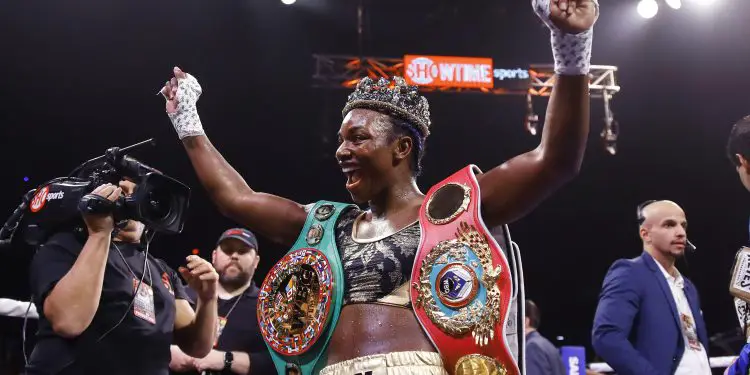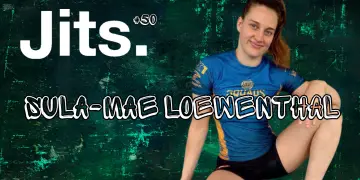Claressa Shields is one of the most accomplished American boxers in recent years, and she just made something of a splash in the Jiu Jitsu and MMA world by claiming that she could (and would) become a BJJ black belt in two years, ostensibly as a result of her transition from pure boxing to MMA. As usual, the Jiu Jitsu community is up in arms about this perceived slight from the latest Olympic champion to sign for PFL.
Can she do it? I mean, sure. Money can buy a lot of things, including a BJJ black belt. I don’t think that’s what we’re arguing about, though: what Claressa Shields really did with her comments was undermine our idea of a black belt, and having someone completely undermine the work that so many of us have done creates a visceral reaction.
I have lots of opinions about this, and I’ll get to those, but let’s start with some definitions and math, which is just what everyone wants in an article they’re reading for fun. According to research, it takes 10,000 hours of deliberate practice to become an expert in something— anything. “Deliberate” practice is something that can be defined academically: it is practice with full concentration and a focus on improving a particular part of the individual’s art or skill.
Just to clarify: if I were to go in and roll tonight just to move, that wouldn’t qualify as “deliberate practice.” If I went in and rolled with a focus on improving only my spider guard, I’d be engaging in deliberate practice. Most people do too much practice and not enough deliberate practice, and this slows progression but generally increases enjoyment.
Now that we’ve defined what we’re talking about, on to the math.
Ms. Shields is a professional boxer with numerous fights under her belt, so let’s not assume that she’s starting at zero hours. Let’s assume, given her experience and her recent foray into MMA, that she’s working off 5,000 hours of dedicated grappling practice. I think this is a vast overestimation, but she is an excellent athlete and I want to give her the benefit of the doubt, especially given her phenomenal boxing career and experience as a fighter.
So, assuming that Claressa Shields has 5,000 more hours of deliberate practice to do to achieve her black belt, I’ve done the math. If she trains 350 days per year (everyone should have holidays, even workaholic Americans—I say that with empathy, as a workaholic American) she will train 700 days of Jiu Jitsu in two years. Simple math will tell us, then, that she will have to perform about 7 hours and 8 minutes of dedicated BJJ practice (in the gi) per day to accumulate the requisite 5,000 additional hours of training to get her black belt. If she needs 7,000 hours to get to mastery, that has her working 10 hours per day only on gi Brazilian Jiu Jitsu, which is absolutely unsustainable.
Possible? I’d go so far as to say no, particularly because she seems focused on an MMA career, and she’ll need to factor in time for camps, rest, weight cutting, striking practice, strength training, no-gi grappling, conditioning, and all the other things that go along with a career in mixed martial arts. It’s really common for people in striking arts to carry their mentality from striking into grappling. Because striking and grappling are both forms of fighting, it becomes easy to draw false equivalencies between the two, but they aren’t the same. Mastery of grappling just takes longer, and that’s perfectly okay– and the reason why so many people like it so much. There’s always more to learn.
Grappling— whether it’s gi, no-gi, judo, BJJ, wrestling, sambo, or any other type of grappling— is a conversation. Or, perhaps more accurately, an argument. You can practice striking on pads or a bag, but there’s no substitute for grappling another human being. When I roll with someone, I need to be strong, fast, and technical, but I also have to be able to redirect weight and momentum. I need to physically move my opponent in a way that isn’t required when striking, and that throws a significant wrench in the works when practicing.
I think of Jiu Jitsu like Poland. I don’t speak Polish, but if you dropped me in Poland with nothing but a Polish dictionary, I hope I’d be functionally fluent in Polish after 700 days. I might be able to translate some things for family and friends if they came to visit. What I wouldn’t be able to do, however, is translate for a neurosurgeon or rocket scientist. I simply wouldn’t have the vocabulary. Despite 700 days of dedicated practice, I wouldn’t be ready to have an argument with Poland’s best attorney in Polish.
Back to Ms. Shields, now. I reached out to her for comment, but haven’t heard back: if I do, I’ll write an update to this piece and allow her to have her say. I have no doubt that Ms. Shields could accomplish a lot in two years, particularly with excellent coaches and deliberate practice. However, I don’t believe that she would be able to achieve the skill set necessary to be classed as a black belt in that time. But you know what? It doesn’t matter in the slightest.
One of the amazing things about Jiu Jitsu is that it keeps us honest. There’s no faking it: that’s why it’s so easy to suss out fake black belts in the sport. Live training allows us to weed out people who are unqualified. It shows us what kind of shape we’re in, how we stack up against people with similar demographics, and where we’re weakest. Learning Jiu Jitsu either ignites a life-long love of grappling or burns an athlete out when they can’t eat those early, humbling lessons. Everyone’s journey to black belt is unique. An assumption that someone could get a black belt in two years doesn’t take my black belt away from me, and it won’t take yours from you either.
Sources:
Ericsson, K. A., Krampe, R. T., & Tesch-Römer, C. (1993). The role of deliberate practice in the acquisition of expert performance. Psychological review, 100(3), 363.
Popova, M. (2014). Debunking the Myth of the 10,000-Hours Rule: What It Actually Takes to Reach Genius-Level Excellence. Brain Pickings. January, 22.













The 10,000 hours thing is a myth, though. (Psych PhD here.)